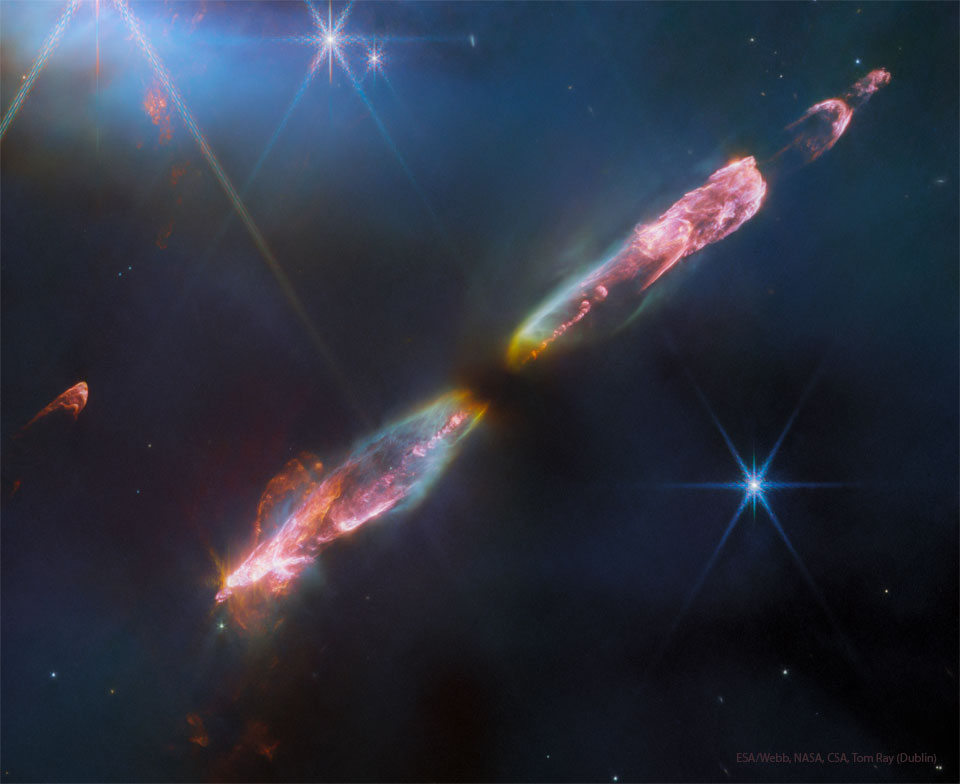2023年9月19日
HH 211: Jets from a Forming Star
Credit: NASA, ESA, CSA, Webb; Processing: Tom Ray (DIAS Dublin)
Explanation: Do stars always create jets as they form? No one is sure. As a gas cloud gravitationally contracts, it forms a disk that can spin too fast to continue contracting into a protostar. Theorists hypothesize that this spin can be reduced by expelling jets. This speculation coincides with known Herbig-Haro (HH) objects, young stellar objects seen to emit jets — sometimes in spectacular fashion. Pictured is Herbig-Haro 211, a young star in formation recently imaged by the Webb Space Telescope (JWST) in infrared light and in great detail. Along with the two narrow beams of particles, red shock waves can be seen as the outflows impact existing interstellar gas. The jets of HH 221 will likely change shape as they brighten and fade over the next 100,000 years, as research into the details of star formation continues.
Tomorrow’s picture: another star’s planets
HH 211: 形成中恒星的喷流
影像提供: NASA, ESA, CSA, Webb; 影像处理: Tom Ray (DIAS Dublin)
说明: 恒星总是在形成时产生喷流吗?没人能说个准。随着气体云发生引力塌缩,它所形成的圆盘会转得太快,以至于无法继续塌缩产生原恒星。理论学家臆测这种旋转,可以透过释出喷流来降低。这种猜测与现知的赫比格-哈罗天体(HH)吻合,因为这些年轻的星体看似都有喷流,有时甚至极为壮观。上面这幅最近由韦伯太空望远镜(JWST)在红外光所拍摄的影像,极为细致的呈现了形成中的年轻恒星HH 211。影像里,除了两管狭窄的粒子束之外,还可见到这些外泛流冲撞原先就存在的星际气体时,所产生的泛红震波。接下来对恒星形成细节的研究会持续进行,而HH 221的喷流则于未来10万年内,可能会在变亮或变暗时改变形状。
明日的图片: another star’s planets



